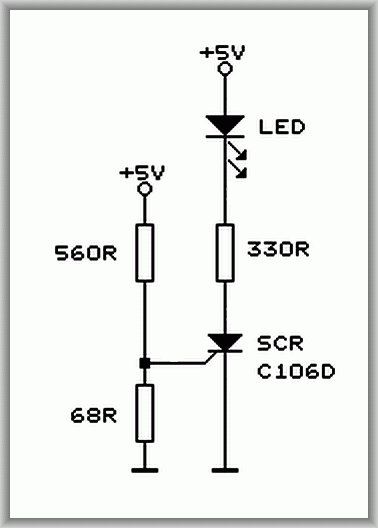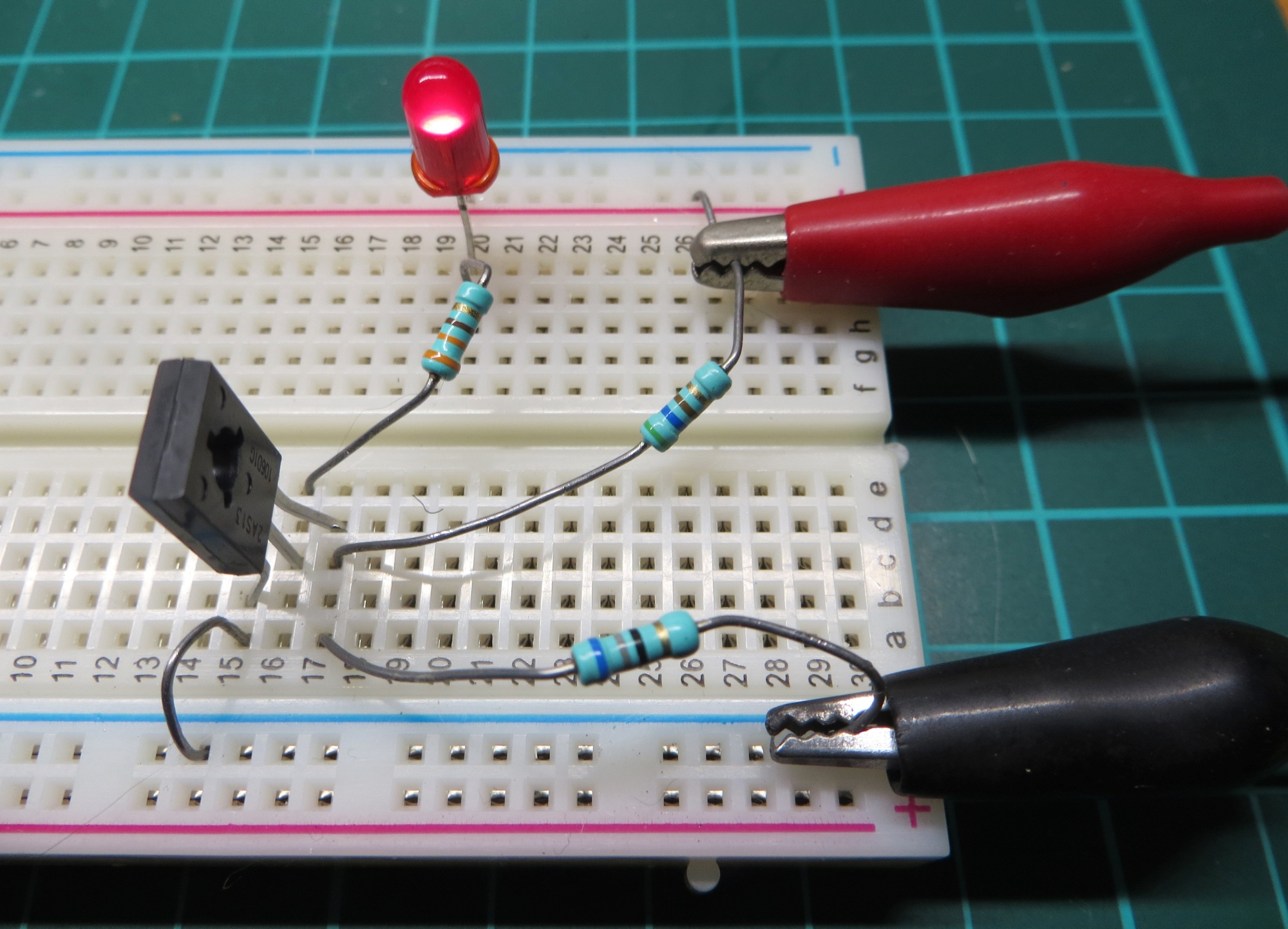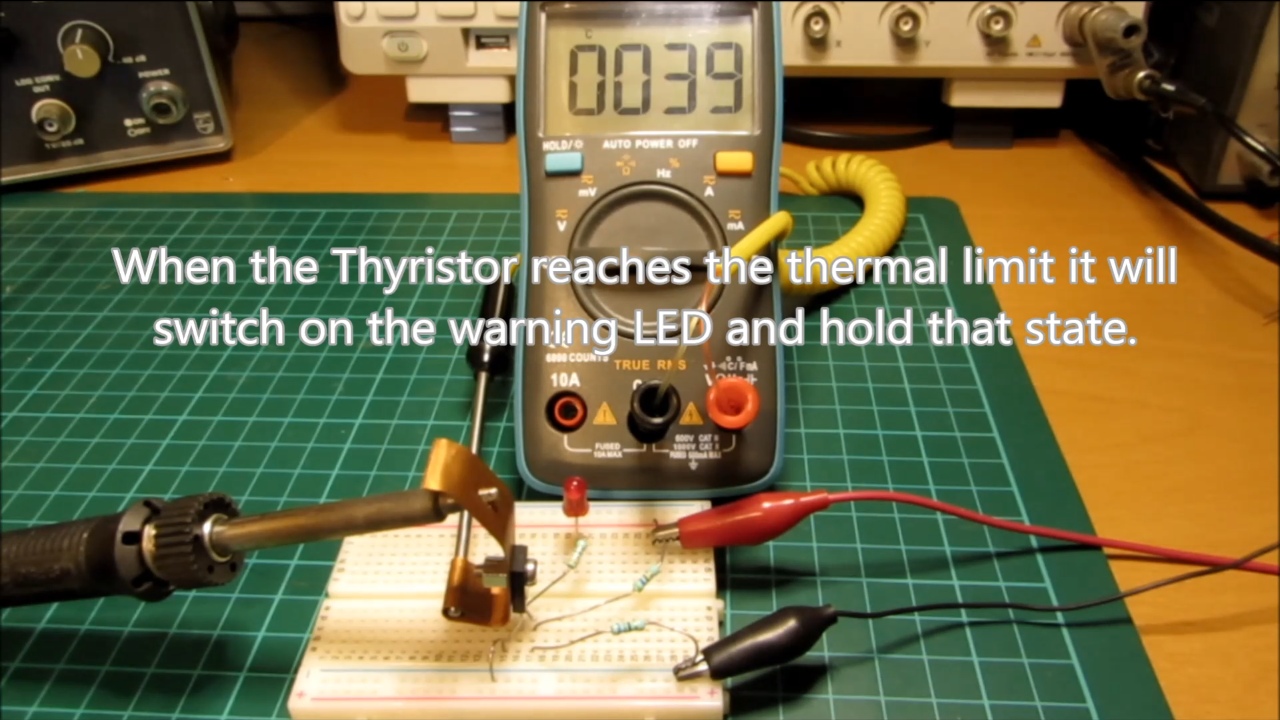This circuit uses just one Thyristor functioning as a combined sensor, switch and memory. In addition you need 3 resistors and a LED. The Thyristor is mounted on the object that has to be temperature monitored, using the mounting hole on the tab. Now if the object get's too hot at some moment the Thyristor switches on and engages an indicator LED, staying in that state untill a reset is done. This way it can be even detected later that the object temperature became too high. Reset can be done by shortly interrupting the supply or by adding an breaking pusbutton in series with the LED.
Concept of this circuit idea:
The gate input of a Thyristor has a diode-like structure. The voltage drop across a diode decreases with increasing temperature. Therefore the trigger treshold voltage of a Thyristor lowers when temperature rises. If you now apply a fixed constant voltage to the gate, with such a value that it does not trigger at room-temperature, a high enough temperature will make it trigger. This is not an accurate circuit, you could easily be 10 celsius off, but it can be good enough to function as a thermal overload indicator of something like a power amplifier. If you have the Thyristor switching a relay it could turn into a protection circuit by switching off the load for example.
The circuit diagram and an example build on a breadboard:


Details:
The circuit was build with a standard Thyristor: the C106D (available for 0.4E). Using the resistor values from the schematic and using a 5V supply, the gate voltage measured 544mV at 20 celsius. If you only have a TRIAC available, that also works, just check with your multimeter which pin (M1 or M2) forms a diode with the gate. A TIC206 was tested and that worked fine, it had a diode from gate to M1, the 560 ohm resistor had to be changed to 470 ohm.
Demonstration movie of the sensor-switch:
